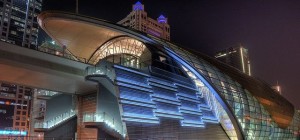Source: www.dnaindia.com
In what could be considered as a major technical change in the design of the rakes of Mumbai metro, the Mumbai Metropolitan Region Development Authority (MMRDA) has asked the Reliance Infrastructure led consortium constructing the second line of metro to check whether a “third rail” method of traction is more suitable in supplying electricity to the metro operations as compared to a conventional 25 kv AC traction system- which provides supply from above the metro rakes.
 MMRDA metropolitan commissioner Rahul Asthana said that the authority wants the Mumbai Metro Transport Pvt Ltd (MMTPL), the Reliance Infrastructure led consortium to check if such a change is possible and feasible. “The Versova-Andheri-Ghatkopar (VAG) corridor, which will be the first to be commissioned, will have the normal 25 kv AC traction with pantograph on the head of the metro rakes. However, there is a general perception that this method of providing electric supply may look aesthetically bad.
MMRDA metropolitan commissioner Rahul Asthana said that the authority wants the Mumbai Metro Transport Pvt Ltd (MMTPL), the Reliance Infrastructure led consortium to check if such a change is possible and feasible. “The Versova-Andheri-Ghatkopar (VAG) corridor, which will be the first to be commissioned, will have the normal 25 kv AC traction with pantograph on the head of the metro rakes. However, there is a general perception that this method of providing electric supply may look aesthetically bad.
Moreover, the height at which the metro will run makes it even a potential safety issue. Many place through the alignment; it will pass very closely from the nearby buildings- many of them residential. Hence we have asked the MMTPL which will be constructing the Charkop-Bandra-Mankhurd (CBM) metro to check out the third rail methodology,” said Asthana.
Under the third rail methodology, an additional track is laid between the two tracks of up and down metro lines. The third line- more popularly known as “third rail” is a method of providing electric supply to a railway train through a conductor placed alongside or between the rails of a railway track. It is used typically in a mass transit or rapid transit system, which is normally fully segregated from the outside environment.
In mist cases, this third rail systems supply direct current (DC) electricity. In contrary to this technique, a pantograph is a device that collects electric current from the overhead lines (which is seen on the suburban trains in Mumbai) and supplies it to the rakes.
According to Asthana, world over the Mass Rapid Transit System (MRTS) do use such technique. “It is run on the 750 volts DC power. I am sure if tried in metro, it will make the system much safer as compared to the overhead electrification,” opined the official.
Officials of the Indian Railway evoked mixed reactions over the third rail proposal by MMRDA.



















